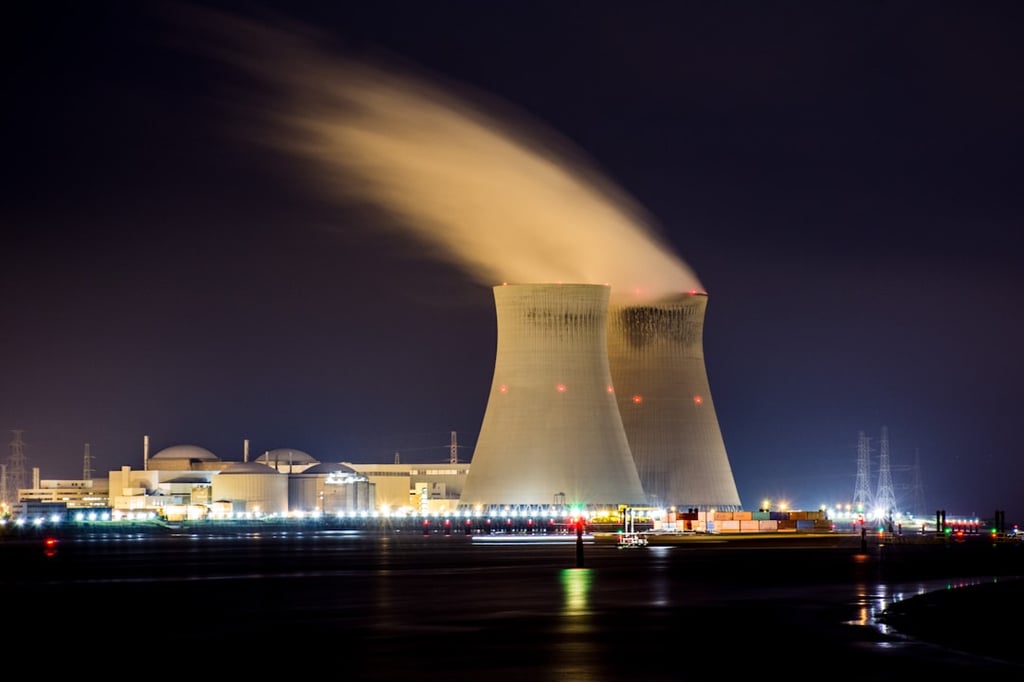See also: Top RPA Companies
And: Benefits of RPA
One of the keys to digital transformation – that most fashionable term – is creating a management structure in which everything is accountable to data analytics. In a related trend, robotic process automation (RPA) helps automate a company’s work flow and business processes. At its most optimum, RPA is driven by an AI-based analytics platform.
These key emerging technologies are the focus on this webinar. By attending, you will learn:
- What exactly is robotic process automation (RPA)? Why is this form of automation gaining adoption among companies?
- How can data analytics and AI work in tandem with robotic process automation?
- What’s a strategic way for companies to adopt RPA and AI?
- What’s the near term future of RPA and AI?
To provide insight into digital transformation, RPA and AI, I’ll spoke with Harry Glaser, Chief Business Officer, Sisense
Download the podcast:
How Does RPA Serve Businesses?
Glaser: “Imagine a robot, in all cases, a virtual robot, a software robot, sort of observing what you are doing, and then starting to take over the menial tasks of it. Imagine that you have a role or a job where you have to click a bunch of buttons every day in order to do the same thing every day, even basic stuff; I open my email, I search for emails from my boss first, I open those, then I get rid of a bunch of junk and spam, whatever.
You can imagine your RPA assistant doing that for you. And as a category, I think it’s been around for a little while, but what’s really interesting, and we just announced a partnership on this with an RPA company, is the ability to deliver AI, and for the little AI robot to actually use AI technologies in order to more accurately predict and more efficiently predict what it is that you’re gonna need to do, and then do it for you.
“RPA is having its breakout moment right now, and the growth rates are staggering, but it’s still early.
“One thing that I think is really fun as an example is data integration. Right? So Sisense is a data company, I think about this a lot. And you’ve got your data sources, and maybe you’ve got some nice modern data sources like a cloud data warehouse, and maybe you’ve got some also good data sources like on-premise warehouses or whatever, but then everybody’s got their long tail of Excel spreadsheets and whatnot.
“And so, maybe when you’re preparing your data, you get the latest Excel upload, you drag it into the right file system, you connect it up to the BI platform or whatever, and that’s a thing that you do every single day. And that’s an easy example of, your RPA assistant can actually just do your daily data integration tasks for you, even if they’re a little bit different every day.
“And this is where the AI comes in. Maybe the filename is off, or the place to put it is a little different today, or there’s some data cleaning that happens as part of this process, where you actually open up the spreadsheet and you look for bad data and you clean it up before you load it in.
“The RPA can handle all of that for you, as it learns from watching you for a week or so or however long it takes, it can actually learn all of those things and start to do all of that for you.”
How Does AI Work in Tandem with RPA?
Glaser: “I think it’s one system, and the AI technology’s enhancing. Enhancing RPA is what I think is causing it to have its breakout moment right now.
“So you could imagine an RPA system where you give it very specific instructions, and it follows the very specific instructions, and that’s all it does. That’s not so interesting. Right? But an RPA system that can learn and that can know what to do even in somewhat ambiguous situations. Like, for example, data cleaning, all of a sudden has many times more utility and many times more usefulness. And so, the incorporation of the AI technologies, that makes it really interesting and it’s causing this massive growth rate.”
In some cases, companies may be able to reduce staff – or not. How do you think RPA will influence the staffing situation?
Glaser: “It’s interesting. Like a lot of automation, it turns out to not have much of an impact on staffing. It lets you focus on things that are the creative and strategic work, as opposed to the menial task.
“But if you imagine somebody who’s using RPA – data integration, let’s take my example. They were not hired to copy Excel files or clean Excel files, and the fact that they’re spending time cleaning Excel files is a frustration for them. And the fact that they are maybe not getting their tasks or their objectives achieved as fast as they might, is a frustration for their boss.
“And so, if we can invest in this, we can make everybody much faster to achieving their objectives, that generates more efficiencies, and more profit, and more revenue for the companies, and maybe even generates more investment over time, and that’s what we see.
“Including some of the most famous data scientists, some of the highest-compensated data scientists in the world, what they spend their time on, I bet they would all tell you they spend 70% of their time on data cleaning and data munging.“
Who’s directly operating the RPA? Is it the data scientist? Or is it the manager who’s managing the data scientist?
Glaser: “It depends. In the case that I just described, maybe it’s the data scientist themselves running the RPA. But you could also imagine a scaled-out system where we want different assistants doing the same kind of task at many different levels and some kind of central control, and that’s also possible.
“And you could also imagine quality control, where it’s like, ‘Okay, out of our 1000 RPA systems, one of them has kinda gone off the rails,’ but just like what might happen with a human employee, ‘and we need to take some corrective action,’ and that might also be a centralized process.”
How Do Companies Get Started with a Robotic Process Automation System?
Glaser: “Well, I think it’s on the RPA system to bring the AI. What you don’t want is to tell the customer, “Buy our dumb RPA and then use your own AI somehow to improve it.” That’s like, ‘Aren’t you supposed to be the technology company? Aren’t you supposed to be bringing me the advanced technology?’
“And maybe I’ll take this opportunity to show for the partnership that we just did. So Sisense is a data company and an AI company, and we provide some of those AI underpinnings for UiPath, which is the world’s leading and fastest-growing RPA company. And that enables UiPath to do exactly what I just described, which is, ‘We have a self-learning robot that we will sell you, and that will make you more efficient and more creative in your work.’ And it’s on us to bring the technology that does all the learning. Right?
“And so that, the robot, just like if you hired a human assistant, will bring sophisticated intelligence and creativity to its own work. Right? So that it enables you to do the more strategic work, and it’s on the technology vendor, in this case UiPath, to bring all that technology.”
So if you would advise a company on how to select an RPA solution, what are the key points for them to focus on?
Glaser: “I think two things. Number one, be transparent, as always, in what it is, the outcomes that you are looking for as a result of buying this RPA system. And ask the technology company, “I wanna see examples of you driving this for other customers. I wanna understand how you plan to drive this.”
“And then number two, I would ask about under the hood. “Is this thing a dumb task-repetition machine? Or does this thing learn? And if this thing learns, How does it learn? What technology does it employ?” Poke under the hood. Ask to understand the statistics. Right? Just like when you’re buying anything.
“I would say in technology in general, large companies that as buyers expect to be purchasing a partnership. And we can break it out in the cost structure or not, but either way, I expect as the buyer to have… To be making phone calls to you, and us planning together, and us strategizing together, and us playing together.
“And then, small companies tend to want something where they press a button, maybe they put in a credit card, they get the tech, and then they use the tech, and they become experts in the tech, and they don’t need or want a human to call. And so, that’s just a question of your profile as a buyer and as a company.”
What about the near-term future of RPA and AI over the next, say, 2-4 years? How do you think the sector will change? And how can companies prepare?
Glaser: “I think that the biggest thing that the companies need to do, is to get their heads around the the trust issue. The companies that are going to experience the most acceleration as a result of RPA and AI are the ones that are gonna be eager to plug in and let it do its thing.
“And I sometimes see, ‘Well, we’re a little scared so we’re gonna dip our toe in and we’ll let the RPA copy files around from A to B.’ That’s fine, that’s also. That’s fairly easy to do, and then they may come back and go, ‘Well, the business benefits haven’t been all that impressive.’ Like, ‘No kidding. You’re just letting it copy files around.’ Right?
“But if you let it do end-to-end data integration, just to fall back on my previous example, you can see much more rapid benefits and free your people up to do much more strategic work over time. I think we are just at the beginning. RPA is like one vector for letting AI improve the way we work in companies.
“And often, when we imagine AI, we think about consumer implications, cars, whatever. We think about societal implications. But how AI will help us improve in business and what does B2B AI look like, it is something that we have just begun to think about, and I think that is an area where we can maybe see business transformed at every level by leveraging AI at every step of the way. And I wouldn’t pretend to know all of the different ways it will happen, but I think it’s just begun.”
It seems like one of the issues will be user interface, because if you need to be a data scientist to really run your API program, that could be effective. But what if a mid-level sales individual can really interface with their RPA solution without the help of IT or data scientists, then they’re way more powerful.
Glaser: “Exactly, I see no reason why that couldn’t happen. Right? Once we have the technology, instantiating it for every single mid-level sales person or what have you, is essentially free from a technology point of view. And so yes, we can take this thing and now deploy it massively at scale throughout the organization, and implications of that are awesome. And again, we’re just scratching the surface now.
“I think the key thing that I would go back to is the basics, which is: don’t ignore it. You see this with all technological innovation. Using data to make decisions, or re-platforming onto the Internet, or the cloud, or mobile. Right? Where it’s like some group of companies are leaders, think Netflix, and they aggressively re-platform, and their business becomes a massive success.
“And some companies stick their head in the mud and go, “We don’t believe in this. We’re gonna keep doing it the way we’ve been doing it.” Pick your favorite TV studio that was slow to the party. And those companies become challenged and ultimately, unsuccessful. And this AI and RPA transformation is another one of these waves. You can get ahead of it, invest and be successful, or you can ignore it at your peril.”
-
Huawei’s AI Update: Things Are Moving Faster Than We Think
FEATURE | By Rob Enderle,
December 04, 2020
-
Keeping Machine Learning Algorithms Honest in the ‘Ethics-First’ Era
ARTIFICIAL INTELLIGENCE | By Guest Author,
November 18, 2020
-
Key Trends in Chatbots and RPA
FEATURE | By Guest Author,
November 10, 2020
-
Top 10 AIOps Companies
FEATURE | By Samuel Greengard,
November 05, 2020
-
What is Text Analysis?
ARTIFICIAL INTELLIGENCE | By Guest Author,
November 02, 2020
-
How Intel’s Work With Autonomous Cars Could Redefine General Purpose AI
ARTIFICIAL INTELLIGENCE | By Rob Enderle,
October 29, 2020
-
Dell Technologies World: Weaving Together Human And Machine Interaction For AI And Robotics
ARTIFICIAL INTELLIGENCE | By Rob Enderle,
October 23, 2020
-
The Super Moderator, or How IBM Project Debater Could Save Social Media
FEATURE | By Rob Enderle,
October 16, 2020
-
Top 10 Chatbot Platforms
FEATURE | By Cynthia Harvey,
October 07, 2020
-
Finding a Career Path in AI
ARTIFICIAL INTELLIGENCE | By Guest Author,
October 05, 2020
-
CIOs Discuss the Promise of AI and Data Science
FEATURE | By Guest Author,
September 25, 2020
-
Microsoft Is Building An AI Product That Could Predict The Future
FEATURE | By Rob Enderle,
September 25, 2020
-
Top 10 Machine Learning Companies 2020
FEATURE | By Cynthia Harvey,
September 22, 2020
-
NVIDIA and ARM: Massively Changing The AI Landscape
ARTIFICIAL INTELLIGENCE | By Rob Enderle,
September 18, 2020
-
Continuous Intelligence: Expert Discussion [Video and Podcast]
ARTIFICIAL INTELLIGENCE | By James Maguire,
September 14, 2020
-
Artificial Intelligence: Governance and Ethics [Video]
ARTIFICIAL INTELLIGENCE | By James Maguire,
September 13, 2020
-
IBM Watson At The US Open: Showcasing The Power Of A Mature Enterprise-Class AI
FEATURE | By Rob Enderle,
September 11, 2020
-
Artificial Intelligence: Perception vs. Reality
FEATURE | By James Maguire,
September 09, 2020
-
Anticipating The Coming Wave Of AI Enhanced PCs
FEATURE | By Rob Enderle,
September 05, 2020
-
The Critical Nature Of IBM’s NLP (Natural Language Processing) Effort
ARTIFICIAL INTELLIGENCE | By Rob Enderle,
August 14, 2020
SEE ALL
ARTIFICIAL INTELLIGENCE ARTICLES









